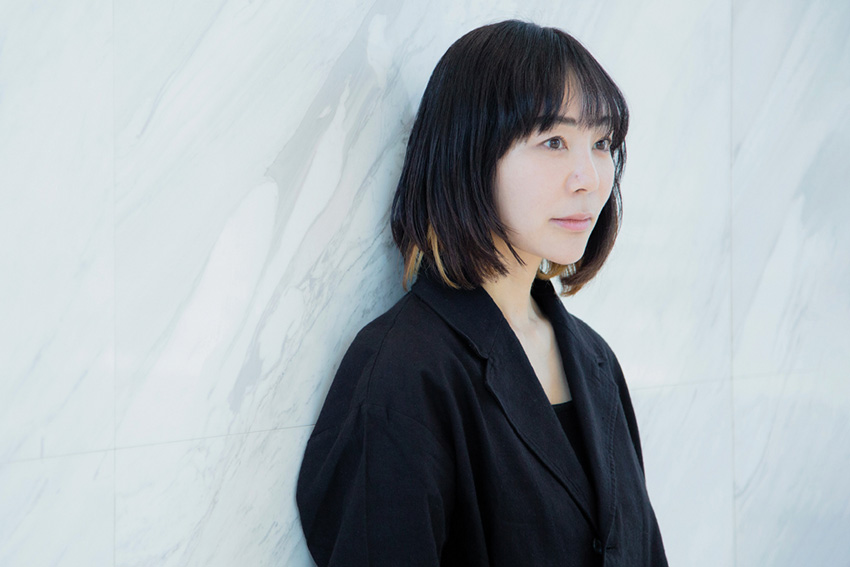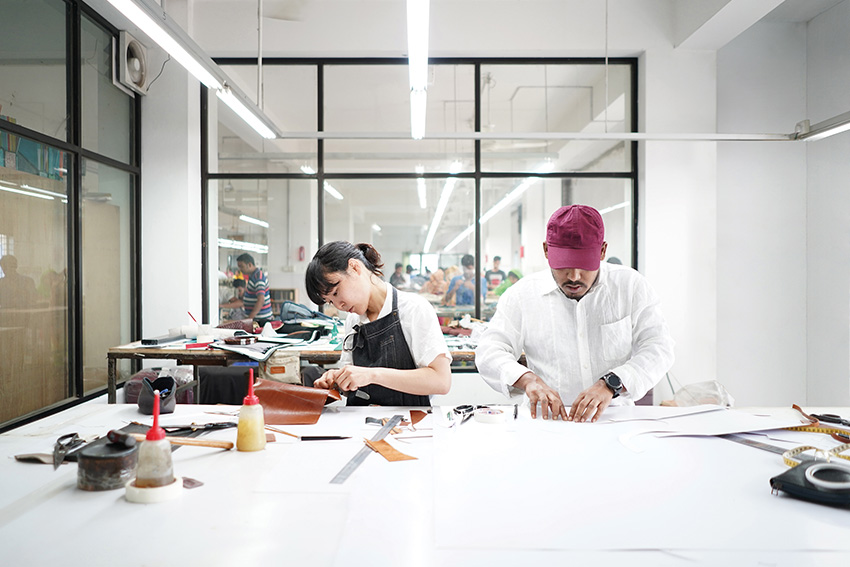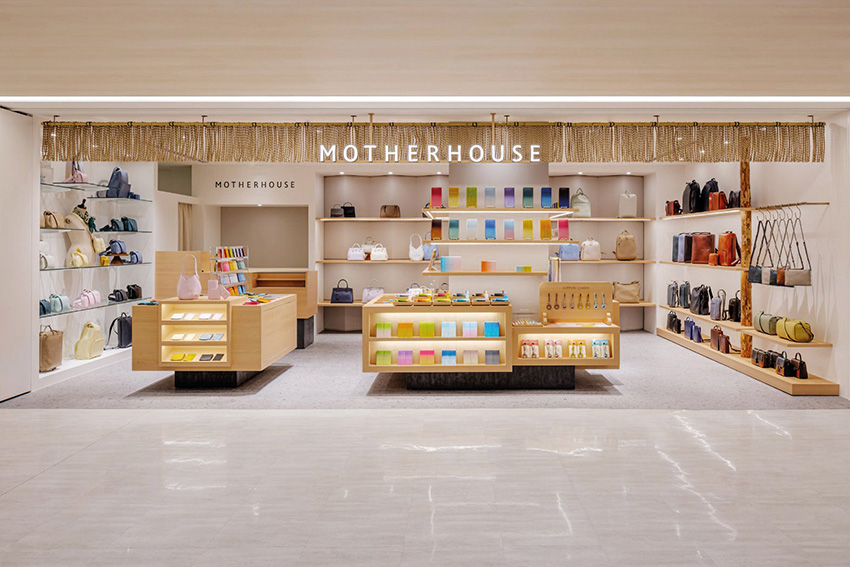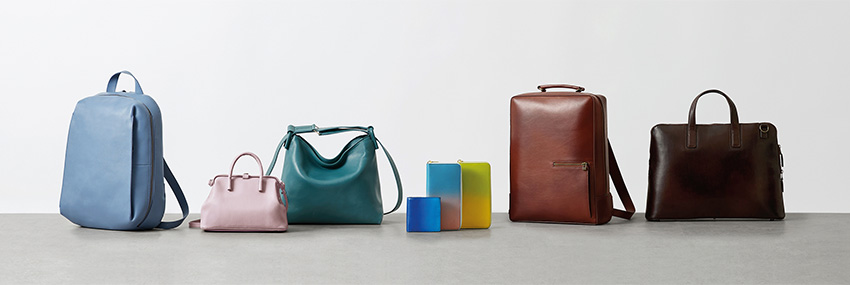MOTHERHOUSE is a fashion brand born from a vision to empower developing nations. Eriko Yamaguchi, the founder, shares her transformative journey, blending Japanese design finesse with the craftsmanship of Bangladesh. From redefining fast fashion to promoting sustainability, MOTHERHOUSE sets a new standard in the industry.

When establishing the company, I was very interested in international cooperation and assistance. It has become one of my goals to become a part of the United Nations or World Bank. When I was in my senior year at university, I was able to experience a four-month internship at the Inter-American Development Bank. I realized that international organizations are policy-makers and data analysts, rather than those that have hands-on experience. It was hard to tell if donations were contributing to the growth of the local area. I wanted to have more hands-on field experience and looking for a place to do so, I learned about Bangladesh, one of the poorest countries in Asia, and decided to go there.
I attended graduate school in Bangladesh after graduating from university in Japan to experience the reality of living there, not just to travel.
I first visited the country for 10 days but quickly realized that more than 10 days were needed. This is the reason why I decided to go to the BRAC Graduate School of Development Studies in Bangladesh.
What made you decide to go into "manufacturing"?
In Bangladesh I lived alone and visited different companies and NGOs. During that process, I learned about the hardships of Bangladeshi life.
There have been so many demonstrations, coup d'états, and examples of political corruption in daily life and these are serious problems that the public has to face.
Due to these facts and many other factors, I recognized that it is very difficult for donations from overseas to effectively reach the local people.
With that, I decided to try and determine what would be the best economy or industry that could support the local people at the time. At that time there was a move from China to Bangladesh in terms of labor, especially in the garment industry.
However, there were also many challenges. Since fast fashion is extremely short-term and not sustainable in how it supports the local society.
All of my classmates were Bengali, and one comment, in particular, that changed my life was when a classmate said that they did not need aid, they needed jobs. My mindset changed to think about new ways to create businesses and jobs rather than finding ways to send aid. These Bengali classmates, however, wanted fancy jobs like consultants in the banking field. Unfortunately, the reality is that Bangladesh is mostly dependent on agriculture and manufacturing industries, →. I tried to discover the best way to create a new business.
Through my search, I discovered that Bangladesh is the world’s number one exporter of jute, and I was so moved to discover that within this poor country, there is something that the people can be really proud of as the world’s number one. I visited the factory and learned about child labor and corruption, and it was here that I really saw the gravity of the situation. I tried to think of ways to convert jute in a way that would help the local people. Jute is was then commonly used for coffee bags or potato bags, but I thought that if this jute could be converted into more of a fashion item, then I might be able to mitigate some of the local issues.
Since I was a graduate student there, I really did not have any idea where to start. Seeing jute, you will understand that it is very coarse and rough, and in fact, it is stinging to the skin. The first step I took was working with local Bengalis on how to make it smoother. I also learned that Bangladesh has very good leather, so by combining jute and leather, we would make very nice bags. Unfortunately, finding a factory that could make these products was a struggle. Minimum orders were in bulk, so we are talking 20,000-30,000 units and I only had my savings, so my budget was very tight. I visited over 30 factories before finally finding a factory that could create samples, so I paid in advance and received 160 bags with the two materials combined.
After getting these 160 bags done, was confronted with an incident that showed the difficulty of building trust.
As you can imagine, I got very desperate. I was thinking about giving up MOTHERHOUSE. I reflected on what changes would drive the business forward, and I think that creating trust among people is very difficult and always carries certain risks. I thought long and hard and when I was 25, I decided to establish my own factory. Establishing a factory in a location where you do not have much affinity comes with huge risks. I began hiring staff and we would make bags from early in the morning till late at night. Now the company has grown to have over 340 people working in that factory and we export 13,000 bags per month. Even the government of Bangladesh has given us credit for what we have done.

Ms. Yamaguchi works with local craftsmen to create products at the same table
A big problem with fast fashion is the quality, and items are routinely thrown away after a short amount of time. It is estimated that every 5 minutes about 10,000 items of fast fashion are thrown into landfills. We know that as part of your environmental initiatives, you offer your RINNE series of bags and accessories that you create by recycling and reusing customers' leather bags. However, recycled materials can also decrease the perceived quality of products in the eyes of consumers. How are you able to ensure a high level of quality in your RINNE series?
With our RINNE series, we take worn-out bags from our customers and recycle them. The treatment of leather is important so first, we treat the leather, recover it, and then disassemble it before finally recoloring spots where needed.
Japanese quality is often times seen as some of the finest in the world, and with a weak JPY coupled with growth in inbound tourism as well as tax-free reductions for tourists, Japan has become attractive to shoppers. Tourists can take advantage of the economic situation to bring quality Japanese apparel and accessories back to their home countries. What business opportunities do you see for your firm by leveraging inbound tourism?
We do have a lot of inbound tourists purchasing our products and it is growing yearly. We have customers from the US, Hong Kong, Singapore, France, and many more countries around the world. We recently opened a shop in Narita Airport, so you can see that we are constantly contemplating how to cater to overseas customers. I am a designer and the designs we create are a real collaboration between my Japanese influence and the work manufactured by the people of developing nations. When people from overseas come and see our products they can feel this sort of fusion between Japan and other countries. I believe this synergy touches the hearts of the consumers.
Could you elaborate more on the details of your Japanese design elements?
There are three characteristics of Japanese design elements in MOTHERHOUSE. First, if the West is a culture of decoration, Japan is a culture of subtraction. In other words, it is the beauty of minimalism. Therefore, when developing a product, we always examine what elements are truly necessary. We do not go to the trouble of adding weight and design. The second point is color. Unlike other countries, Japan has four distinct seasons, and colors vary according to the season. The colors of the materials are mixed and graduated based on the beauty of the changing seasons, such as pink for cherry blossoms in spring, and orange for gingko trees and autumn leaves in fall. The third point is functionality with physicality in mind. For example, this is why there are many 2-way bags.
Backpacks that are formal one-shoulder bags for work during the day but can be converted into backpacks in an instant are a hit. Such "beauty of use" that considers human lifestyle and physicality is also a characteristic of my design.
You talked about how this is a collaboration between many different nations. Jute and leather from Bangladesh, as well as aspects from India, Indonesia, Nepal, and others. Are you looking to find more developing countries to bring into your collaborative scheme, and if so which countries?
Many developing countries and ethnic minorities around the world have their unique beauty. Our search for them has only just begun. This is why we hope to find local partners and build true partnerships. We are not just a mere buyer of materials, rather we look to establish ourselves in a locality and plant roots by hiring local people. That can be a challenging point.

Narita Airport Terminal 1 store
How is MOTHERHOUSE creating a unique in-store experience for its customers?
A key part of our branding is the emphasis we put on the storytelling aspect of our products. We do not do any form of wholesale or provide to select shops; therefore customers can only purchase our bags through our direct-line shops. This is essentially the core DNA of our company. Additionally, we like to refer to our staff members as storytellers, telling the story behind the creation of the bags. These passionate staff members are pushing us forward and creating a more real type of in-store experience. Once a year we invite the artisans from these developing countries to come to Japan. Customers enjoy meeting the people behind the craft in person.
In 2022 you launched your namesake brand, Eriko Yamaguchi, which utilizes materials from Asian countries and is inspired by your own story. What was the motivation behind starting this brand and how are you going to ensure its successful growth going forward?
India and Bangladesh are neighbors and therefore in Bangladesh, they are always thinking about India. The Indians are very proud of their handwoven & handspun cotton called “Khadi”. Ever since the period of Mahatma Gandhi, Khadi weaving has been supporting the local lives of women who live in the countryside. The number of weavers for handspun Khadi is decreasing year by year, and big brands have tried to revive this hand work without any success. I was thinking that if we can use Khadi to create more modern fashion apparel, it will become more attractive to the general public, thus leading to a revitalization of the material. We have our factory in Calcutta with 40 artisans there so when I visit, I will ask them to produce things such as shirts, one-pieces dresses, jackets, and so on, to create a total collection. In the future, I would like to further showcase the beauty of Khadi - a wonderful material from India.
A recent release of yours is the Kazematou Round Backpack. When it comes to product development, do you have anything new that you are creating or any new designs that you would like to share with us?
My idea behind this design is that the starting point comes from the human body shape. The Kazematou Round Backpack, for example, uses a more fluid-shaped strap, and making this strap shape is quite difficult and can only be achieved by hand with scissors. I enjoy the designing process and am always thinking about ways to decrease the burden on users’ shoulders since that is the contact point of a bag wearer. Lightness is key in decreasing this burden, but leather is often considered quite a heavy material and people will opt to choose nylon instead. People are surprised by the lightness and softness of the leather used in our leather bags. This is because Bangladeshi cowhide is particularly suitable for MOTHERHOUSE's leather bags due to their high quality and lightweight.
Of course, humans come in many shapes and sizes. How do you adapt to different body shapes when it comes to your products?
At our Narita store, 70% of the customers are from overseas. Although I am Japanese, I am making these products in collaboration with Bengali people so thinking about making essentially borderless designs is something that is always on my mind. I am looking to create things that are universal and not just to satisfy the Japanese people.
In terms of the make-up of your customers, is it primarily going to be Japanese moving forward or are you going to attempt another international store location in the future?
This is the homework that I am currently working on. Branding is the key to success, and while the Japanese are good at craftsmanship and working on minor details, at times we are not very good at branding and sending out concepts to the world. I think it is important to send out a more sophisticated yet simple message through our branding.
I have written a book about my experiences as a designer and translated it into English. This is because I want people around the world to have a clear understanding of our brand and its concept. We would like to actively seek out opportunities to publish the book and introduce ourselves to the world. We are looking at the possibility of opening stores in the U.S., Europe, and other parts of the world in the future.
Imagine that we come back in 2031 and have this interview all over again. What goals or dreams would you like to achieve by the time we come back for that new interview?
There is a prejudice in the world that developing countries are poor and can only produce low-quality products. I want to prove that wrong.
MOTHERHOUSE products are a "true collaboration" between Japan and developing countries through manufacturing. I visit developing countries on my own, find materials that the country can showcase to the world, and then create high-quality products "together" with the local craftsmen in our solely owned factories while developing our unique designs. We manufacture our products "together" with developing countries.
I want to further expand our brand and make it a global brand. Reaching the tangible achievement that my brand is recognized worldwide will prove that even developing countries can create world-class products.
As a first step, we plan to expand MOTHERHOUSE to the United States. I want to take up this challenge as a learning experience and fully leverage this opportunity for us to make our first step in becoming a "global brand from a developing country.”

0 COMMENTS